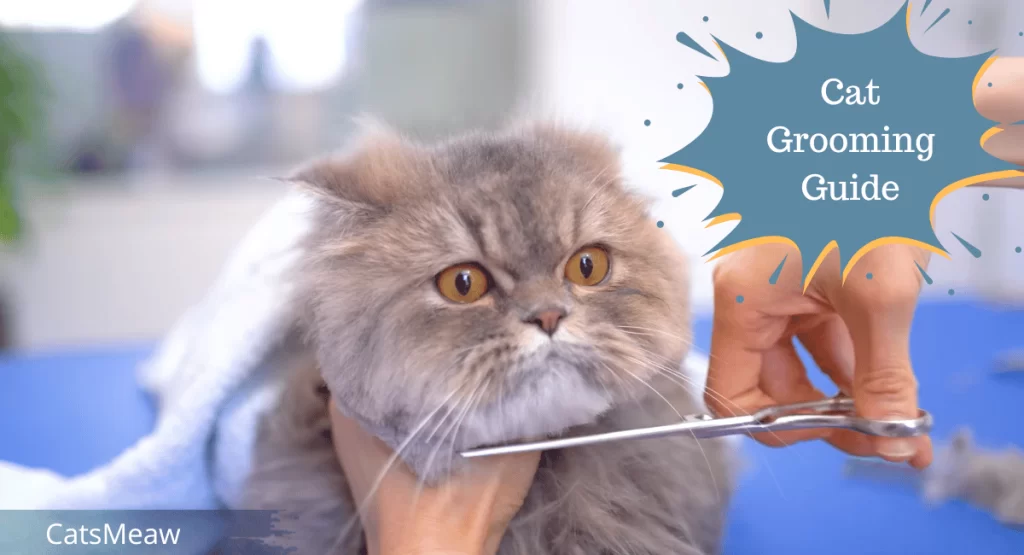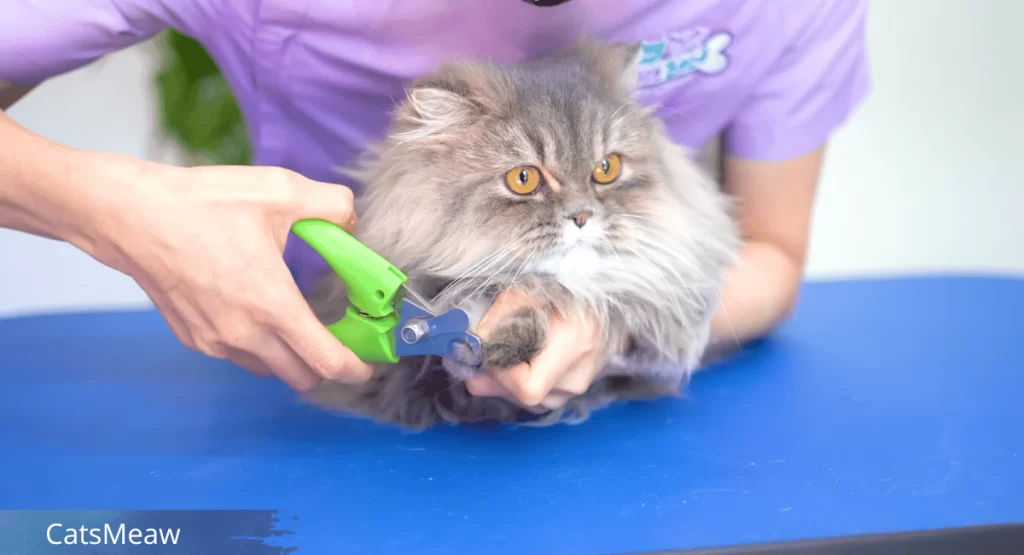Cats are known for their cleanliness, spending a significant amount of time grooming themselves. However, this doesn’t mean that they don’t need any human intervention when it comes to grooming. Regular grooming is essential for the overall health and well-being of your cat. Not only does it keep their coat looking beautiful, but it also helps prevent various health issues.

Grooming your cat helps to remove dirt, debris, and loose hair from their coat, preventing matting and tangling. It also stimulates blood circulation and distributes natural oils, which keeps their skin healthy. Regular grooming can also help you detect any abnormalities like lumps, bumps, or parasites that may require immediate veterinary attention.
Table of Contents
Benefits of regular cat grooming
Regular cat grooming offers numerous benefits for both you and your feline companion. Firstly, it helps reduce shedding. Regular brushing removes loose hair and prevents it from ending up all over your furniture and clothes. This not only keeps your home clean but also minimizes the risk of hairballs developing in your cat’s digestive system.
Additionally, grooming time is an excellent opportunity for bonding with your cat. It allows you to spend quality time together, strengthening your relationship. Cats enjoy being groomed when done correctly, and it provides them with a sense of comfort and relaxation.
Furthermore, regular grooming can help prevent and control fleas and ticks. By thoroughly inspecting your cat’s coat during the grooming process, you can detect any signs of these pesky parasites and take appropriate measures to eliminate them.
Understanding your cat’s grooming needs
It’s important to understand that different cats have different grooming needs. Factors such as breed, coat length, and overall health can influence the grooming requirements of your feline friend. For example, long-haired cats, like Persians, require more frequent grooming sessions to prevent their fur from matting.
Observe your cat’s grooming habits to determine their needs. If you notice excessive matting, shedding, or skin issues, it may be a sign that your cat needs more regular grooming. Additionally, cats with certain health conditions, such as arthritis or obesity, may require extra care during grooming to ensure their comfort.
Essential cat grooming tools and supplies
To effectively groom your cat, you’ll need the right tools and supplies. Here are some essential items you should have:
- Cat grooming brush: Choosing the right grooming brush is crucial for maintaining your cat’s coat. For long-haired cats, opt for a slicker brush or a bristle brush with long, widely spaced bristles. Short-haired cats, on the other hand, benefit from a rubber brush or a grooming glove.
- Cat nail clippers: Trimming your cat’s nails is an important part of grooming. Invest in a pair of cat-specific nail clippers with a sharp blade to ensure a clean cut without causing any discomfort to your cat.
- Ear cleaner: Cats are prone to ear infections, so it’s essential to clean their ears regularly. Use a cat-friendly ear cleaner and cotton balls to gently remove dirt and wax buildup.
- Toothbrush and toothpaste: Dental hygiene is often overlooked in cats. Brushing your cat’s teeth regularly can prevent dental issues. Use a cat toothbrush and toothpaste specifically designed for feline use.
- Shampoo and conditioner: Occasionally, your cat may need a bath to keep their coat clean. Use a gentle, cat-specific shampoo and conditioner to avoid irritating their skin.
Related: Best Guide to Trimming Your Cat’s Nails
How to choose the right cat grooming brush
Choosing the right cat grooming brush is crucial for maintaining your cat’s coat and ensuring their comfort during grooming sessions. Here are some factors to consider when selecting a brush:
- Coat type: Determine if your cat has a long or short coat. Long-haired cats require brushes with longer, widely spaced bristles to prevent matting, while short-haired cats benefit from brushes with rubber bristles or grooming gloves.
- Bristle type: Consider the type of bristles the brush has. Soft bristles are suitable for cats with sensitive skin, while firm bristles are better for removing loose hair and tangles.
- Size and handle: Choose a brush that feels comfortable in your hand and has an appropriate size for your cat. A cat grooming brush with an ergonomic handle can make the grooming process easier and more enjoyable for both you and your cat.
- Quality: Invest in a high-quality cat grooming brush that will last. Cheaper brushes may have bristles that fall out easily or may not effectively remove loose hair.

Remember, every cat is unique, so it may take some trial and error to find the cat grooming brush that works best for your furry friend. Be patient and observe your cat’s reaction to different brushes to ensure their comfort and enjoyment during grooming sessions.
Step-by-step guide to grooming your cat
Grooming your cat can be a pleasant and stress-free experience if done correctly. Here’s a step-by-step guide to help you groom your cat effectively:
- Prepare the grooming area: Find a quiet, well-lit area where you and your cat can be comfortable during the grooming session. Place a non-slip mat or towel on a flat surface to prevent your cat from sliding or feeling insecure.
- Start with gentle brushing: Begin by gently brushing your cat’s coat to remove any loose hair and tangles. Use long, smooth strokes and be careful around sensitive areas like the belly and tail. Reward your cat with treats and praise to make the experience positive.
- Check for abnormalities: As you brush, carefully inspect your cat’s skin for any abnormalities, such as lumps, bumps, or signs of fleas or ticks. If you notice anything unusual, consult your veterinarian for further examination.
- Trim the nails: If your cat’s nails are long, it’s time for a trim. Hold your cat’s paw gently and use the cat-specific nail clippers to trim the tips of the nails, avoiding the quick. Take breaks if needed, and reward your cat with treats and affection.
- Clean the ears: Use a cat-friendly ear cleaner and cotton balls to gently clean your cat’s ears. Be cautious and avoid inserting anything deep into the ear canal to prevent injury.
- Brush the teeth: Introduce your cat to toothbrushing gradually. Start by using a cat toothbrush and toothpaste specifically formulated for feline use. Gently brush your cat’s teeth in circular motions, focusing on the gum line. Gradually increase the duration of brushing sessions over time.
- Bathing (if necessary): If your cat requires a bath, use a gentle cat-specific shampoo and conditioner. Fill a sink or basin with warm water and carefully wet your cat’s fur, avoiding the head area. Apply the shampoo and lather it gently, then rinse thoroughly. Dry your cat with a towel or a low-heat hairdryer, if they are comfortable with it.
- End on a positive note: After grooming, reward your cat with treats, playtime, or their favorite toy. This helps create positive associations with the grooming experience and strengthens the bond between you and your cat.
Related: Hair Loss in Cats
Regular grooming is essential for the health and well-being of your cat. It helps maintain a beautiful coat, prevents health issues, and strengthens your bond with your feline companion. By understanding your cat’s grooming needs, using the right tools and supplies, and following a step-by-step grooming routine, you can ensure that your cat enjoys a comfortable and stress-free grooming experience. So, embrace the benefits of cat grooming and make it a regular part of your pet care routine.
